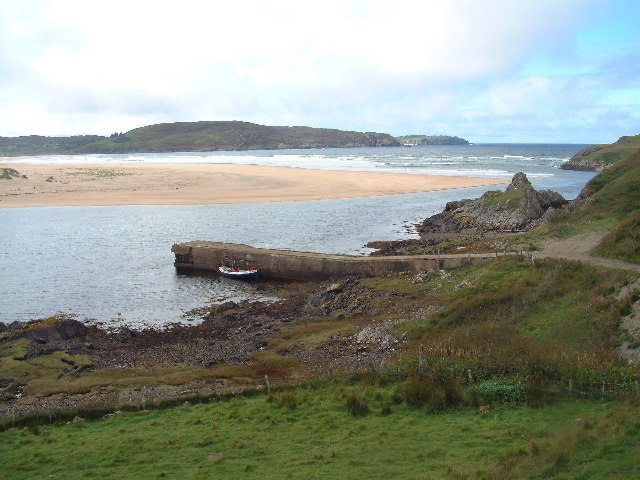The north coast of Scotland is pockmarked with bays and inlets, and one of the deepest and narrowest of the latter is the Kyle of Tongue. Once upon a time drivers were forced to wind their way around a 10-mile stretch of road to get from one side of the Kyle to another, but there is now a bridge to help them on their way. In the old days an alternative means of crossing the Kyle was offered: a "large flat boat" which was moved from one side to the other "by means of a windlass and chain". The boat was capable of carrying a carriage "without the horses being unharnessed". *
In 1746, in the run-up to Culloden, there was a battle between a royal naval frigate HMS Sheerness and a ship called Hazard, which was carrying over £13,000 in gold coins to fund Bonnie Prince Charlie's rebellion. The Hazard had fled into the Kyle of Tongue in order to evade its pursuers, and the gold was thrown into the loch before the crew were captured. To the north of the village is
Tongue House, which the Clan MacKay moved to after abandoning their former seat,
Castle Varrich. Castle Varrich, which is believed to occupy the site of a former Norse stronghhold, offers wonderful views of Ben Loyal and Ben Hope mountains, making it an attractive place to visit. The village of Tongue has a church,
St Andrews, dating from the late 17th century. The church has a feature which is commonly found around these parts called a "laird's loft", which is a raised gallery where the laird and his familiy used to worship.
*Guide to the Highlands and Islands of Scotland, Including Orkney, by George and Peter Anderson, 1842.
Map of the area.
 |
| Tongue, Caisteal Bharraich and the Kyle of Tongue - geograph.org.uk - 597543. Photo by Chris Downer, via Wikimedia Commons. |











